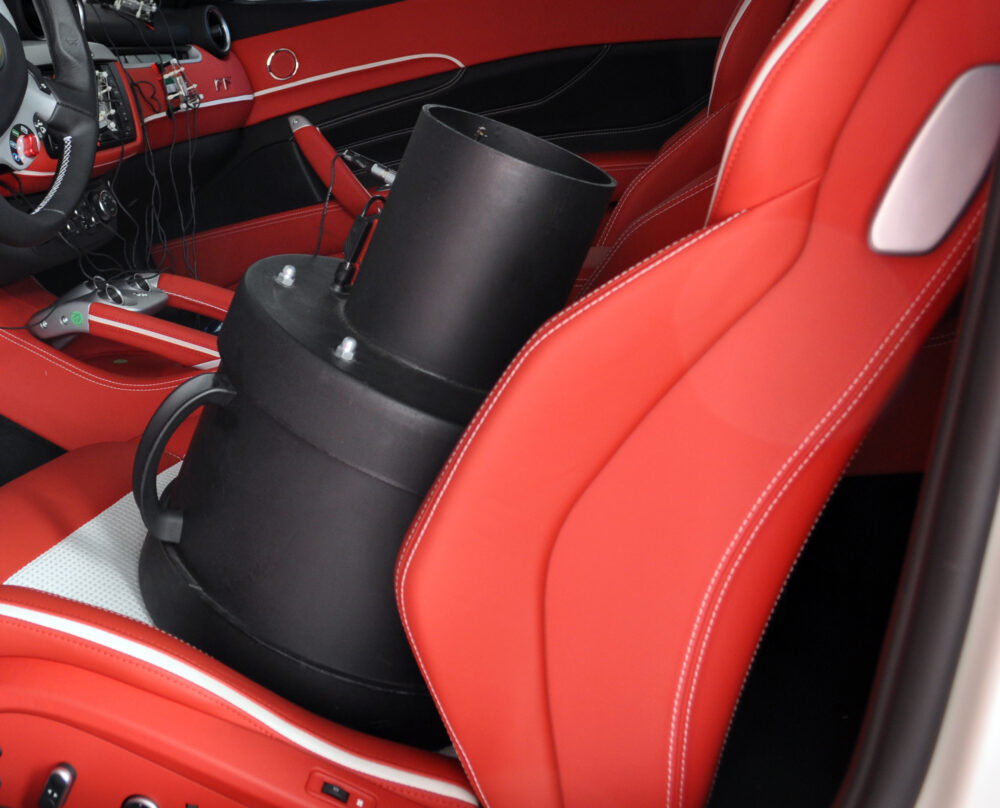
Low Frequency Sound Source LVVS
MF006 LVVS | DIRECT VOLUME VELOCITY MEASUREMENT, 30Hz - 500Hz
The low frequency volume velocity source is an omni-directional sound source which behaves like a acoustic monopole with controlled source strength. The sound source has a particle velocity sensor mounted at the end of the duct to accurately measure its broadbanded acoustic output. The frequency range covered by this source goes from 30 Hz up to 500 Hz. A power amplifier is supplied with this volume velocity source.
The low frequency volume velocity source is an omni-directional sound source which behaves like a acoustic monopole with controlled source strength. The sound source has a particle velocity sensor mounted at the end of the duct to accurately measure its broadbanded acoustic output. The frequency range covered by this source goes from 30 Hz up to 500 Hz. A power amplifier is supplied with this volume velocity source.
Low Frequency Sound Source LVVS system features at a glance
OMNI-DIRECTIONALITY THAT PROVIDES DIRECTION
This omni-directional noise source is equipped with a Microflown particle velocity sensor on the tip of its nozzle, being the only source capable of directly measuring the radiated volume velocity for a broad frequency range with unparalleled accuracy. The source is capable of generating high excitation levels in order to properly excite the sound field under study. This Low Frequency Volume Velocity Source can be used for a wide range of applications like transfer path analysis, component vibroacoustic behavior characterization, airborne source quantification and pass by noise simulations
Cross-compatibility with all major third party software platforms
The reference sensor incorporated in all Volume Velocity Sources (VVS) is natively supported by all modules of Microflown's software Velo. In addition, with the recent introduction of a programmable signal conditioner (MFPA-VVS), the sources can also be used seamlessly with the following software platforms:
- Head acoustics ArtemiS SUITE
- Müller BBM PAK 6.x
- Siemens Simcenter Testlab
Features
- Frequency range 30 Hz - 500 Hz
- High power output: max. Sound Power of 122 dB
- Direct volume velocity measurement
- Integrated particle velocity sensor -
- Fast reciprocal transfer function acquisition
Applications
- Acoustic Transfer Functions
- Panel Noise Contribution Analysis
- Transfer path analysis
- Airborne source quantification
- Sound package evaluation
- Component vibro-acoustic characterization
How does it work?
MFPA-VVS integrates a bank of programmable filters before the pre-amplification stage of the traditional MFPA. The filtering stage (2 high-pass and 2 low-pass filters) compensates the natural frequency-dependent sensitivity of particle velocity sensors, achieving a broadband correction at the output of the MFPA-VVS for the entire frequency range. The corner frequencies of the filters can be adjusted by the manufacturer every time the sensor (VVS source) is calibrated. Please be aware that the MFPA-VVS has to be exclusively used with one single volume velocity source, and therefore this pre-amplifier is not interchangeable.


